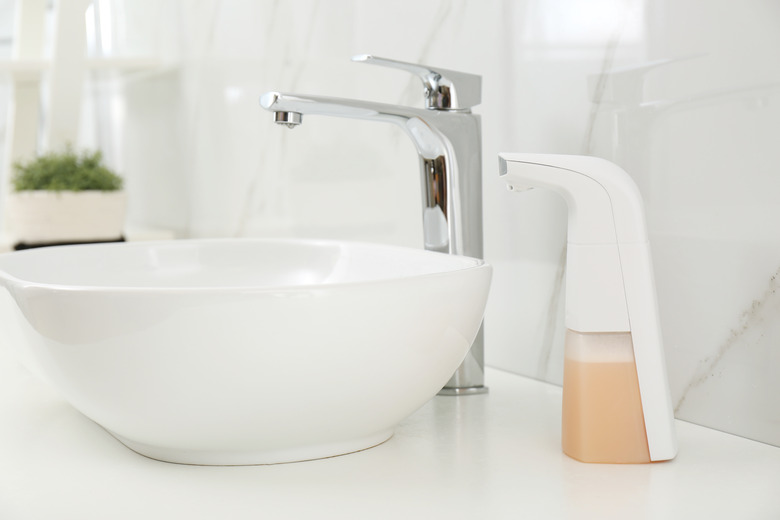3 Common Issues With Touchless Faucets — And How To Fix Them
We may receive a commission on purchases made from links.
Touchless faucets conserve water, as the water does not run continuously while you're at the sink. However, when the faucet pauses for a lengthy period of time or no water flows from the faucet, it may need an adjustment. While the faucets are complicated, requiring professional installation in the kitchen or bathroom because of the special plumbing requirements and the need for electricity to power some models, troubleshooting some issues with hands-free faucets is fairly simple. Here are the most common issues with a touchless faucet — and how to fix them.
1. The Faucet Won't Trigger
1. The Faucet Won't Trigger
Check the sensor eye if the faucet won't trigger. The sensor is usually located at the base of or on top of the faucet spout. Remove the protective adhesive label covering the eye if it is still present and remove any debris present over the eye. Replace the sensor eye if it is scratched or damaged.
Check whether a special function was accidentally triggered, such as the "continuous run," "temporary off," or "permanent off" features, if you experience issues with water delivery. Steps for disabling the sensor vary by manufacturer, so check the instructions for your brand and model. Make sure you are properly triggering the sensor that operates the faucet and follow manufacturer instructions to manually adjust the sensing zone or sensor range on the faucet if needed. Your faucet may activate itself if the range setting is too long or if factors in the environment, including light sources such as sunlight and reflections, trigger it. Surround sensors on more expensive models generally perform better than infrared sensors.
2. The Faucet Has No Power
2. The Faucet Has No Power
Check the power supply to your unit if the LED light flashes frequently, isn't flashing at all, or your faucet isn't providing water. Touchless faucets may operate off battery or A/C power and may have a battery backup, depending on the model. The batteries of some eco-friendly versions recharge when water passes through the faucet. Other faucets may require regular batteries or lithium batteries.
Replace the batteries to check whether doing so resolves the issue. Rechargeable batteries may lose the ability to hold a charge. A low battery indicator on your unit may fail quickly, leaving you without water with no warning.
In Sloan faucets, the solenoid may fail to make the sound associated with triggering the faucet if your battery is low. Reset the electrical system by unplugging the unit for 10 seconds. Check the transformer, sensor, solenoid, and power cables for proper function. Replace malfunctioning parts.
3. The Faucet Is Clogged or Won't Stop Running
3. The Faucet Is Clogged or Won't Stop Running
Inspect the unit's filter, water stop strainer, and the faucet aerator for clogs. Soak your aerator insert in a solution of equal parts water and vinegar if mineral buildup is at fault.
Ensure that your water supply lines are fully open. Examine the faucet's mounting to eliminate a pinched or damaged wire as the cause. If your unit won't stop running or drips, it may be defective or need a solenoid replacement, or you may need to clean or replace the diaphragm seal.
